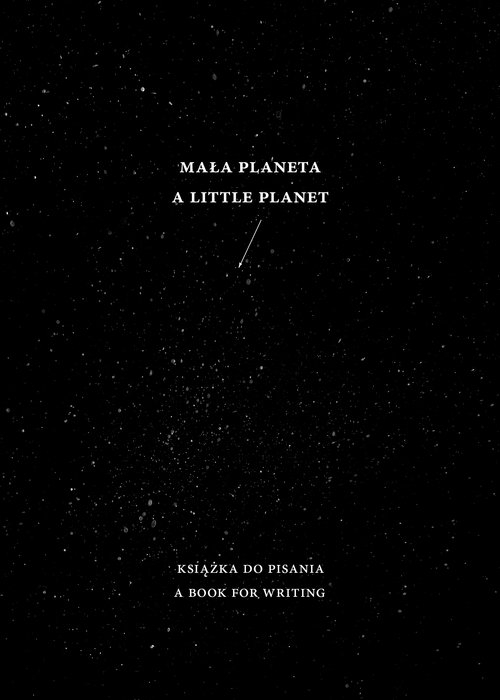W układzie słonecznym – jedna z najmniejszych, na Drodze Mlecznej – prawie niezauważalna, a we wszechświecie – nieskończenie mała drobina… ale jest.
Haiku – gatunek krótkiej poezji (17 sylab lub mniej), który powstał w Japonii w XVI wieku i obecnie stał się bardzo popularną formą poetycką na świecie.
Haibun – krótka proza połączona z jednym lub kilkoma haiku.
Haibunga – haibun połączony z obrazem. Termin stworzony przez Lidię Rozmus w jej książce Dwadzieścia widoków z Kreciej Góry.
Sumi-e (obraz namalowany czarnym tuszem) – jest stylem malowania pędzlem, pochodzącym z XIII wieku Japonii. Ściśle związany z buddyzmem zen i podobny w koncepcji do japońskiej kaligrafii. Sumi-e polega na prostocie myśli, działania i formy, w celu stworzenia unikalnego piękna.
***
In the solar system – one of the smallest, in the Milky Way – almost imperceptible, and in the universe – an infinitely small speck… but it is there.
Haiku – a genre of short poetry (17 syllables or less) that originated in Japan in the 16th century and has now become very popular all over the world.
Haibun – short prose combined with one or more haiku.
Haibunga – haibun combined with the image. The term was coined by Lidia Rozmus in her book Twenty Views from the Mole Hill, Deep North Press, Santa Fe 1999.
Sumi-e (“black-ink pictures”) – is a style of brush painting that originated in the 13th century Japan. Closely associated with Zen Buddhism and similar in concept to Japanese calligraphy, sumi-e relies on simplicity of thought, action, and form to create works of unique beauty.
Haiku – gatunek krótkiej poezji (17 sylab lub mniej), który powstał w Japonii w XVI wieku i obecnie stał się bardzo popularną formą poetycką na świecie.
Haibun – krótka proza połączona z jednym lub kilkoma haiku.
Haibunga – haibun połączony z obrazem. Termin stworzony przez Lidię Rozmus w jej książce Dwadzieścia widoków z Kreciej Góry.
Sumi-e (obraz namalowany czarnym tuszem) – jest stylem malowania pędzlem, pochodzącym z XIII wieku Japonii. Ściśle związany z buddyzmem zen i podobny w koncepcji do japońskiej kaligrafii. Sumi-e polega na prostocie myśli, działania i formy, w celu stworzenia unikalnego piękna.
***
In the solar system – one of the smallest, in the Milky Way – almost imperceptible, and in the universe – an infinitely small speck… but it is there.
Haiku – a genre of short poetry (17 syllables or less) that originated in Japan in the 16th century and has now become very popular all over the world.
Haibun – short prose combined with one or more haiku.
Haibunga – haibun combined with the image. The term was coined by Lidia Rozmus in her book Twenty Views from the Mole Hill, Deep North Press, Santa Fe 1999.
Sumi-e (“black-ink pictures”) – is a style of brush painting that originated in the 13th century Japan. Closely associated with Zen Buddhism and similar in concept to Japanese calligraphy, sumi-e relies on simplicity of thought, action, and form to create works of unique beauty.
Producent:
Klezmerhojs Sp. z o.o
ul. Szeroka 6
31-053 Kraków (PL)
tel: 509711448
email: [email protected]
Szczegóły
Tytuł: Mała Planeta A little planetAutor: Lidia Rozmus
Wydawnictwo: Austeria
ISBN: 9788378665007
Języki: polski
Rok wydania: 2021
Ilość stron: 160
Format: 205x145 mm
Oprawa: okładka miękka
Waga: 0.31 kg
Recenzje
Informacje:
Klienci, którzy kupili oglądany produkt kupili także:
Wiersze i poematy Tom 4
Austeria
Bieguni
Literackie
Udręka życia i inne dramaty rodzinne
Agencja Dramatu i Teatru ADiT
Wielka nierządnica z Babilonu i inne sztuki mityczne
Agencja Dramatu i Teatru ADiT
Czuły narrator
Literackie
Ostatnie historie
Literackie
Zakochany
Próby
Rzeczy, z-myślenia
Austeria
Sygnał w zenicie
Austeria
Wielkie nieba
Stowarzyszenie Pisarzy Polskich














